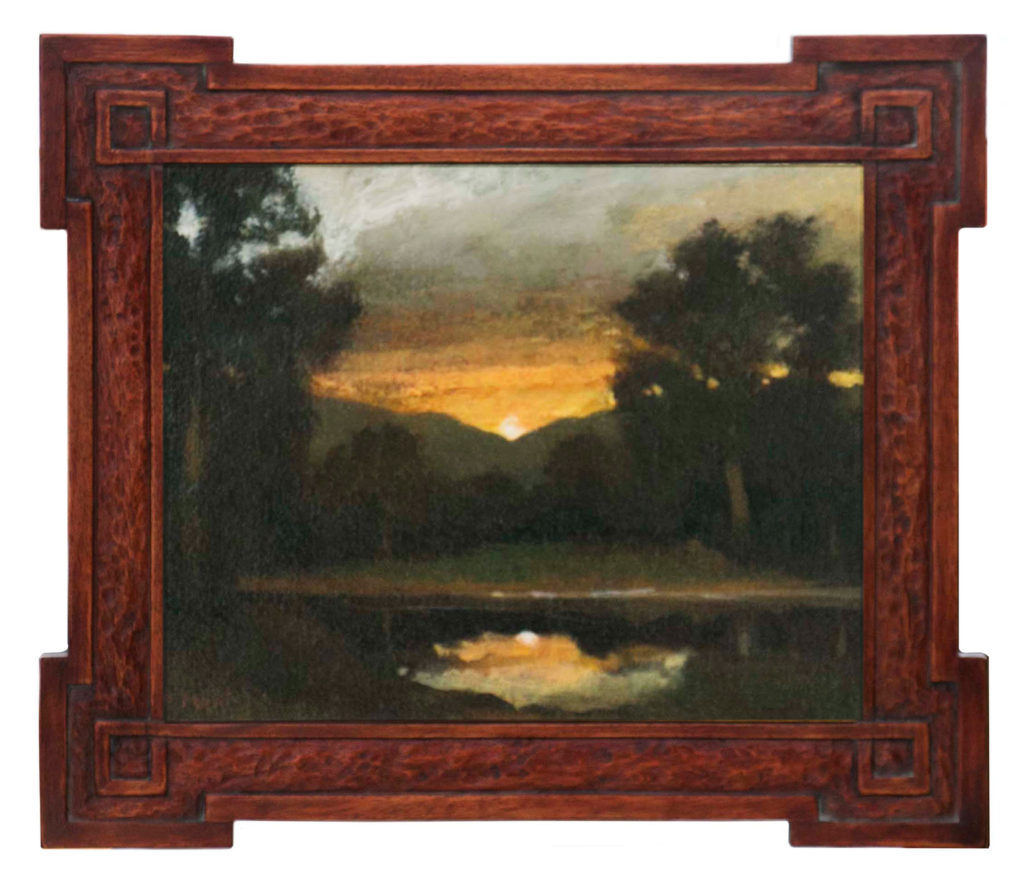
…
Every picture frame starts as a plank of lumber. The molding is handmade, the profiles and carvings designed and made with hand planes, scratch stock and carving chisels. Joinery depends on design as well as other requirements such as size, strength, and frame’s purpose. The two kinds of joinery I use are a traditional tenon and mortise joint, known for its strength, and a miter joint, the most common joinery for picture frames. The tenon and mortise joints are all hand cut, regardless of size or wood species. The miter joints are first cut by hand and then trimmed on a foot-operated cutter.

…
Although almost every picture framing shop uses the miter joint, very few frame makers make miter joints completely without any nails, screws, staples or similar metal fasteners. Over the years I developed a way how to make the miter joint very strong and avoid any metal fasteners in the corners, which are frequently carved, thus assuring that I would not run into a nail or screw with my carving chisel. Making the miter joint that way is much more labor intense and time consuming, nonetheless I believe the longevity and appearance are worth it.

…
After I cut the miters and glue the joint together, I cut a shallow groove on the back, across the corner, at 90 degrees to the joint. The groove is about 3/4 of an inch wide and 3/8 of an inch or more deep. Then I hand cut a spline made of the same species of wood, fit and glue it into the groove on the back of the frame. I leave the spline slightly higher than the top of the molding and hand carve the spline to be convex and slightly higher, with chisel marks yet smooth. Another thing that is typical to my frames is the frame lips, the inner part of the frame that slopes down and covers the edge of the artwork, are all hand carved with the distinct chisel marks left. Those two features are specific to my work. I did not invent them, but I do not really see them around very much.
Walnut, mahogany, and quarter sawn oak are the primary woods I use for picture frames. Depending on the need, any wood species can be used. My frames can be made to accommodate any size or thickness of canvasses, panels, mirrors, photographs, prints and others. The proportion of the frame design, carving and color tone are chosen to accommodate its content. Finishes I prefer are traditional: dyes, shellac, French polish and waxes.


I use power tools, a table saw, a radial saw and a band saw, only sporadically, for rough dimensioning of lumber and miter cuts. The hand tools that I use I accumulated over decades: carving chisels, hand saws, hand planes and such – some nearly 200 years old – still serve the purpose and replicate the techniques they were created for centuries ago.
I have collaborated with artists, galleries, estates, and private individuals in Southern and Northern California and in the Northeastern USA for more than 30 years. Before relocating to the USA in 1981, my art education and early crafting experience took place in Central Europe. Along with picture framing, I have extensive experience in the art conservation field, specializing in wooden artifacts, period furniture and gilded objects as well as carving and gilding period copies of picture frames.
After my recent retirement I am returning full time to woodworking, acoustic guitar restoration and making frames for my artist wife and friends, pieces of furniture for the family and collecting woodcarving chisels. You’re welcome to take a look at my picture frames and how they are made in my one-man shop.
Here are some of the picture frames I have made for the fine art painter Paul Roehl:






Some of my hobbies:






If you have any questions, suggestions, or comments, you can get in touch with me via email. Thank you for your interest.